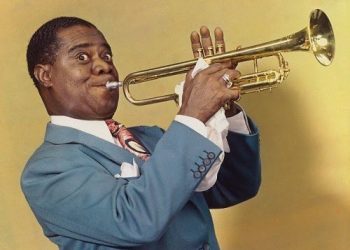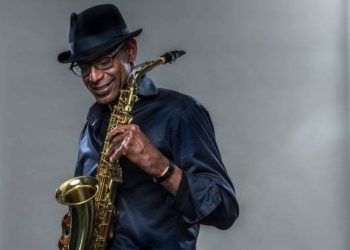The saxophone, with its sultry tones and versatile range, has become an instrument synonymous with soulful jazz solos, electrifying rock riffs, and even classical compositions. Its voice, both smooth and powerful, has captivated audiences for over a century, making it one of the most beloved instruments in modern music. But behind every legendary saxophone performance stands a virtuoso, a master who pushes the boundaries of sound and expression. From the smoky jazz clubs of New Orleans to massive concert stages worldwide, these artists have shaped the way we experience music, leaving an indelible mark on history.
In this article, we celebrate the top 15 saxophone players of all time—musicians whose talent and innovation have transformed the instrument into a global phenomenon. Whether you’re a seasoned jazz enthusiast or a newcomer to the world of sax, this list will take you on a journey through the lives and legacies of the greatest to ever pick up the horn. From the iconic Charlie Parker to the boundary-pushing John Coltrane, these legends have inspired generations of musicians and continue to influence the sound of modern music. So, grab your favorite playlist and dive in as we explore the brilliance of the best saxophonists to ever grace the stage!
1. Charlie Parker
Few names in the world of jazz inspire as much admiration as Charlie Parker, affectionately known as “Bird.” Parker was a true innovator, transforming the landscape of jazz with his exceptional saxophone technique and groundbreaking improvisational style. As a leading figure in the development of bebop, he pushed the boundaries of harmony and rhythm, creating a complex and fast-paced jazz style that still resonates today. His solos were like bursts of lightning—rapid, emotive, and endlessly inventive. Iconic recordings such as “Ko-Ko” and “Ornithology” are essential listening for anyone serious about jazz, serving as benchmarks for aspiring musicians. Tragically, Parker’s life was cut short when he died at the age of 34, but his impact on the saxophone and jazz music is immeasurable. His legacy continues to inspire musicians across various genres, reminding us of the power of creativity and expression in music. Even decades after his passing, Parker’s influence can be felt in the work of contemporary artists, who strive to capture the same spirit of innovation and improvisation that he so effortlessly embodied. Indeed, Charlie Parker remains a beacon of artistic excellence in the rich tapestry of jazz history.
2. John Coltrane
John Coltrane was an undeniable innovator in the world of jazz, redefining the possibilities of both the tenor and soprano saxophones. While his collaborations with Miles Davis, particularly on the legendary album Kind of Blue, are etched in jazz history, it was Coltrane’s solo career that truly propelled him into the realm of jazz greatness. His albums, like Giant Steps and A Love Supreme, showcase not only his technical brilliance but also his deep spirituality and relentless commitment to pushing musical boundaries. Coltrane’s playing transcended mere speed; it conveyed a profound emotional depth that often evoked feelings beyond the notes themselves, reaching something almost transcendent. His relentless pursuit of musical truth and exploration has made him a guiding light for anyone delving into the deeper meanings of jazz. Coltrane’s work challenged conventional jazz norms, incorporating influences from various musical traditions, and his compositions have become essential standards that continue to inspire generations of musicians. Today, Coltrane’s legacy lives on, inspiring countless artists to explore the profound connections between music, emotion, and spirituality.
3. Sonny Rollins
Sonny Rollins epitomizes the essence of the jazz saxophonist, skillfully merging technical prowess with raw, heartfelt emotion. Renowned for his powerful, muscular tone on the tenor saxophone, Rollins’ improvisations possess a narrative quality, transforming each solo into an engaging conversation with his audience. His landmark album, Saxophone Colossus, aptly names him among the titans of jazz, showcasing his unparalleled artistry. Whether performing in intimate combos or as a solo artist, Rollins’ creativity and passion radiate through every note he plays. His innovative spirit has led him to explore various musical avenues, collaborating with countless artists across genres while still retaining his unique voice. Even in his 80s, Rollins remained active on stage, demonstrating that his influence and passion for music are as robust as ever. His dedication to honing his craft and exploring new musical landscapes has inspired many aspiring musicians. Rollins’ legacy as one of the greatest jazz saxophonists endures, reminding us all of the deep emotional connection that music can forge and the unending possibilities that await those brave enough to explore its depths.
4. Dexter Gordon
Dexter Gordon carved out a unique place in jazz history as one of the first tenor saxophonists to adeptly translate the bebop style to his instrument. Known for his warm, rich tone and relaxed phrasing, Gordon’s playing style was characterized by sophistication and an effortless smoothness. His towering presence—both physically and musically—allowed him to stand out in a crowded jazz landscape. His seminal albums, such as Go! and Our Man in Paris, highlight his exceptional ability to balance technical precision with deep emotional resonance. Gordon’s music often tells stories, drawing listeners into a rich soundscape that captures the essence of the jazz experience. Beyond his musical accomplishments, he also made a significant mark in the film industry, earning an Academy Award nomination for his role in Round Midnight. His influence can be heard in the work of countless saxophonists who came after him, proving that his artistry has left a lasting imprint on jazz. Dexter Gordon’s legacy is one of innovation and deep emotional connection, celebrating the power of music to evoke feelings and memories that resonate with audiences everywhere.
5. Stan Getz
Stan Getz, affectionately dubbed “The Sound,” is celebrated for his lush, velvety tone on the tenor saxophone. While Getz was a formidable bebop player, he is perhaps best remembered for introducing the smooth, captivating sounds of bossa nova to American audiences. His collaborations with João Gilberto and Antonio Carlos Jobim, particularly on the iconic track “The Girl from Ipanema,” propelled him into the mainstream, making his music synonymous with the bossa nova movement. Getz’s playing possesses a lyrical, almost vocal quality, capable of melting even the hardest of hearts with its sheer beauty. His unique ability to blend classical jazz with Latin rhythms created a sound that remains both timeless and innovative. Through his recordings, Getz infused a sense of relaxation and sophistication into jazz, allowing listeners to escape into a world of soothing melodies and captivating rhythms. His music continues to resonate with audiences around the globe, transcending cultural boundaries and evoking feelings of joy and nostalgia. Stan Getz’s legacy as a master saxophonist endures, ensuring that his contributions to the world of jazz will always be cherished and celebrated.
6. Cannonball Adderley
Cannonball Adderley’s alto saxophone playing is often described as a burst of sunshine—joyous, soulful, and overflowing with energy. He gained recognition for his work with Miles Davis on the iconic album Kind of Blue, but it was in the realm of hard bop and soul jazz that Adderley truly shined. His solos were lively and expressive, merging technical brilliance with a palpable sense of groove that made his music irresistible. Tracks like “Mercy, Mercy, Mercy” and “Work Song” showcase his extraordinary talent for weaving blues, jazz, and gospel influences into something uniquely his own. Adderley’s enthusiasm for music was infectious, making him a beloved figure both on stage and off. His warm personality and captivating performances endeared him to audiences everywhere, inviting them to share in the joy of jazz. His commitment to musical expression and innovation helped shape the sound of modern jazz, and his legacy lives on through the countless musicians he has inspired. Today, Cannonball Adderley remains a vibrant and influential figure in jazz history, embodying the spirit of creativity, collaboration, and joy that defines the genre.
7. Ornette Coleman
Ornette Coleman was a true revolutionary, a pioneer of free jazz who shattered the conventions of traditional harmony and structure. His playing on the alto saxophone was raw, unfiltered, and deeply emotional, resonating with an intensity that captivated listeners. Albums like The Shape of Jazz to Come not only transformed the jazz landscape but also introduced a radical new approach that prioritized expression over technical constraints. Coleman’s music might have been challenging for some, but for those willing to dive into its depths, it offered a liberating sense of artistic freedom. His innovative spirit paved the way for future generations of avant-garde musicians, making him one of the most influential saxophonists in jazz history. Coleman’s improvisations were marked by a fearless exploration of sound, often incorporating unconventional techniques that defied categorization. His contributions to jazz continue to resonate, encouraging artists to push boundaries and redefine musical norms. Ornette Coleman’s legacy is one of fearless creativity and artistic exploration, reminding us all that music can be a powerful form of expression that transcends traditional limitations and connects deeply with the human experience.
8. Lester Young
Lester “Pres” Young was the master of subtlety, renowned for his light, smooth sound on the tenor saxophone. His laid-back phrasing and relaxed style contrasted sharply with the more aggressive bebop players of his time, setting him apart as a standout figure during the swing era. Young’s collaborations with Billie Holiday, particularly their legendary duets, are celebrated for their emotional depth and exquisite nuance, with each note dripping with feeling. His innovative approach to melody and phrasing has influenced countless saxophonists, including the likes of Stan Getz and John Coltrane, who drew inspiration from Young’s cool, understated sound. He brought a sense of sophistication and effortless elegance to his performances, captivating audiences and shaping the evolution of jazz. Young’s ability to express complex emotions with simplicity made him a true icon of the genre. His influence can still be felt in the playing of contemporary musicians, as they continue to explore the nuanced artistry that he exemplified. Lester Young’s legacy endures as a testament to the power of subtlety and emotional expression in jazz, reminding us that sometimes less truly is more.
9. Michael Brecker
Michael Brecker was nothing short of a saxophonist’s saxophonist, celebrated for his technical brilliance and remarkable versatility. He effortlessly traversed genres, playing everything from jazz to rock and funk with an ease that seemed almost supernatural. Brecker was a pivotal figure in the jazz fusion movement, expertly blending traditional jazz elements with electronic components and contemporary rhythms. His work with the Brecker Brothers, along with numerous collaborations with iconic artists such as Joni Mitchell, James Taylor, and Herbie Hancock, solidified his reputation as one of the most sought-after session musicians of his time. Brecker’s ability to navigate different musical landscapes with such grace made him a unique force in the music world. His innovative approach to improvisation and composition influenced a generation of saxophonists, inspiring them to explore their musical identities. Brecker’s legacy is one of creativity and exploration, exemplifying the spirit of jazz as a genre that embraces change and innovation. His contributions to music continue to resonate, reminding us of the limitless possibilities that arise when musicians are willing to break down barriers and experiment with sound.
10. Wayne Shorter
Wayne Shorter stands out as a saxophonist and composer who has consistently pushed the boundaries of jazz, leaving an indelible mark on the genre. His collaborations with Art Blakey’s Jazz Messengers and Miles Davis’ Second Great Quintet showcased his remarkable versatility and creativity. Shorter’s compositions, such as “Footprints” and “Nefertiti,” have become jazz standards, revered for their intricate harmonies and lyrical melodies. His innovative approach to songwriting has inspired countless musicians to delve deeper into the art of composition. Shorter’s playing is known for its unpredictability and emotional depth, drawing listeners into a world of complex musical textures and profound expression. His ability to weave intricate narratives through his music has made him one of the most influential modern saxophonists, continually inspiring artists to explore new horizons. Throughout his career, Shorter has embraced the spirit of experimentation, infusing his work with elements from various musical traditions. His legacy is a testament to the power of creativity and exploration in jazz, encouraging generations of musicians to push the envelope and redefine the possibilities of the genre.
11. Gerry Mulligan
Gerry Mulligan was a baritone saxophonist who brought a remarkable sense of lightness and agility to an instrument often associated with deep, heavy tones. His collaborations with Chet Baker in the 1950s were pivotal in defining the West Coast cool jazz sound, showcasing a style that emphasized smoothness and melodic beauty. Mulligan’s innovative arrangements complemented his expressive playing, allowing the baritone sax to shine in small combo settings. His ability to blend seamlessly with other instruments made him a standout figure in the jazz world. Albums like Gerry Mulligan Quartet are essential listening for anyone interested in the interplay between composition and improvisation. Mulligan’s music was characterized by its conversational quality, as he created intricate dialogues with his fellow musicians. His influence extended beyond his performances, as he inspired a new generation of jazz musicians to explore the lyrical possibilities of their instruments. Gerry Mulligan’s legacy as a master of the baritone saxophone endures, celebrated for his creativity, innovation, and the unique sound he brought to the jazz genre.
12. Joe Henderson
Joe Henderson was a tenor saxophonist celebrated for his rich tone and boundless creativity. His ability to adapt to various styles—from hard bop to avant-garde and Latin jazz—positioned him as one of the most versatile musicians of his time. Albums like Page One and Inner Urge showcase his remarkable technical prowess and compositional skills, inviting listeners into his imaginative musical world. Henderson’s playing was always deeply expressive, focusing on the emotional core of the music rather than flashy displays of technique. His thoughtful approach to improvisation resonated with both critics and fellow musicians, earning him a dedicated following. Throughout his career, Henderson collaborated with a diverse range of artists, further enriching his musical vocabulary. His legacy is characterized by a commitment to artistic exploration and innovation, encouraging musicians to embrace their individuality and push creative boundaries. Joe Henderson’s influence continues to be felt in the jazz community, as his dedication to meaningful expression and emotional depth remains a guiding principle for aspiring saxophonists and composers.
13. Sidney Bechet
Sidney Bechet was a groundbreaking musician who emerged as one of the first important soloists in jazz, predating even the legendary Louis Armstrong. His mastery of the soprano saxophone and clarinet helped define the New Orleans jazz sound, marked by its vibrant energy and rich emotional expression. Bechet’s playing was fiery and passionate, full of vibrato and feeling, creating a distinct musical voice that resonated deeply with audiences. His improvisations were not just spontaneous bursts of creativity; they felt like beautifully crafted compositions, full of melody and emotion. Bechet’s influence can still be felt in traditional jazz bands today, where his spirit of improvisation and expressive playing continues to inspire musicians. His recordings remain a testament to the power of early jazz, encapsulating the joy and vitality that define the genre. Bechet’s contributions to jazz laid the groundwork for future generations of musicians, and his legacy as a pioneer of jazz saxophone continues to be celebrated. Sidney Bechet’s music serves as a vibrant reminder of jazz’s roots and its capacity for deep emotional expression.
14. Eric Dolphy
Eric Dolphy was a multifaceted musician who played alto saxophone, flute, and bass clarinet, among other instruments, bringing a rich and innovative sound to the avant-garde jazz movement of the 1960s. His groundbreaking albums, such as Out to Lunch! and Far Cry, showcase his unique ability to blend dissonance with beauty, creating music that is both challenging and deeply rewarding. Dolphy’s innovative use of extended techniques on the saxophone—such as multiphonics and wide intervals—set him apart from his contemporaries, pushing the boundaries of what was possible on the instrument. His improvisations often ventured into uncharted territory, inviting listeners to join him on a musical journey that defied conventional structures. Tragically, Dolphy’s untimely death at 36 left the jazz world wondering just how far he could have taken his artistry. His influence can still be felt today, as many musicians explore the adventurous spirit he embodied. Eric Dolphy’s legacy is one of creativity, experimentation, and an unwavering commitment to artistic expression, reminding us of the endless possibilities that jazz offers to those daring enough to explore its depths.
15. Coleman Hawkins
Coleman Hawkins is widely credited with establishing the tenor saxophone as a legitimate and expressive instrument in the world of jazz. His groundbreaking 1939 recording of “Body and Soul” stands as one of the most famous saxophone solos in history, showcasing his extraordinary ability to transform a simple melody into a complex, emotional journey. Hawkins’ deep, rich tone and intricate harmonic ideas laid the groundwork for future generations of saxophonists, including luminaries like John Coltrane and Sonny Rollins. He served as a vital bridge between the swing era and the bebop revolution, making him an essential figure in jazz history. Hawkins’ innovative approach to improvisation and composition has had a lasting impact on the genre, inspiring countless musicians to explore their creative potentials. His contributions extended beyond performance; he was also a mentor to many emerging artists. Coleman Hawkins’ legacy is a testament to the power of jazz as a form of artistic expression, celebrating the depth of emotion and musicality that can be achieved through the saxophone. His music continues to resonate, reminding us all of the profound beauty that jazz can offer.









